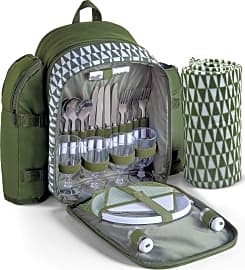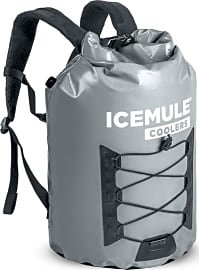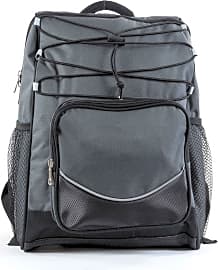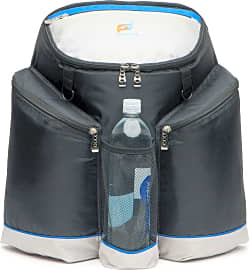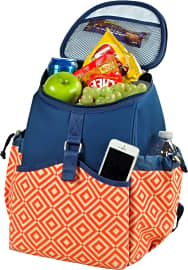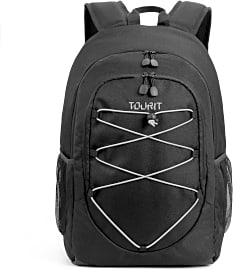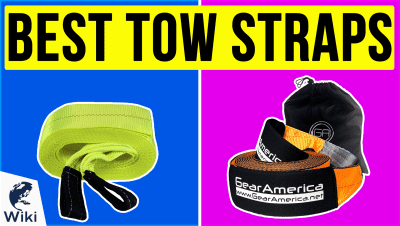The 10 Best Cooler Backpacks

This wiki has been updated 36 times since it was first published in February of 2016. Tote all the drinks and food you need while keeping them at the right temperature in one of these cooler backpacks. These insulated carryalls make catering picnics, beach days, camping, hiking, and any other outdoor activity easy. They're also great for all-day family outings, like a trip to an amusement park, or making sure hungry mouths stay fed on long flights. When users buy our independently chosen editorial choices, we may earn commissions to help fund the Wiki.
Editor's Notes
April 19, 2019:
Obviously, the most important question when choosing a cooler backpack is whether or not it can keep your beverages and snacks the temperature you desire, and for how long. This is why we've only chosen items that have a strong track record of insulating liquid and even ice for long periods of time. Secondary features that we looked for include durable padded straps, additional pockets, slots for cutlery and glassware, and attached blankets. There are bags here that have tons of bells and whistles, in addition to no-frills options that tend to be more budget-friendly.
With regard to updates, the Polar Bear Nylon Backpack was removed due to availability issues. The Igloo Marine Ultra Square Cooler was also taken off the list after investigating several complaints about insufficient insulation, though the similarly stylish and more functional Igloo Switch Marine was added in its place.
Carrying The Cool
A good cooler is a necessary item for your safety, especially if you're consuming foods that have a tendency to decay quickly and attract dangerous bacteria with ease.
A good cooler is a necessary item for your safety, especially if you're consuming foods that have a tendency to decay quickly and attract dangerous bacteria with ease. Less dire, but equally important in the eyes of many, is the pleasure that increases when foods and beverages remain at their proper temperatures. Whatever your concern, whether it be food safety or food flavor, the backpack coolers on our list give you a portable opportunity to take care of both.
Coolers operate by simple tenets of thermodynamics, specifically by reducing conduction and convection. Conduction occurs when molecules in higher states of excitement (hot ones) bump up against those in lower states of excitement (cold ones) and transfer some of their energy.
Picture a quiet bookworm studying away in the library. A bunch of loud jocks charge in, making noise, shutting his books on him, breaking his glasses, etc. At a certain point, the bookworm snaps, and screams at the jocks, maybe even getting violent himself. It's as though their energy transferred over to him. This is conduction in a library nutshell.
Convection transfers energy in a similar process, but it's dependent on currents of air. Using the analogy above, it'd be more like a parade of flying jocks passing over and harassing the bookworm, rather than a single group getting up next to him.
Coolers minimize both of these phenomena by insulating their interiors against them with a thick layer of foam. Styrofoam was once popular for this, but its environmental impact was too great, and manufacturers have since switched to ABS resins and urethane materials. What all of these insulators have in common is a peppering of air pockets throughout their cores, which stifles the flow of heat energy by letting the gasses within them receive and contain the excitement.
As long as you keep a well-insulated cooler closed as often as possible to reduce the transfer of heat energy by air currents (convection), your food and drinks should stay cool (or hot, if that's your thing) for hours, even days.
Where Will You Take The Cold?
I would advise against heading down to your local big box department store, buying a large, rectangular cooler and couple of tow straps, then lugging the giant thing around on your back. It's senseless when such wonderful cooler backpacks exist. At their hearts, each of these backpacks is simply a soft-shelled cooler with straps attached to it.
Once you've taken all of these variables into account, you can fall back on style.
While perusing our list, it'd be helpful to ask yourself how far you need to take your cooler, and into what environment. The answers to these questions should narrow down your selection process to only one or two models.
For example, if you're headed into the wilderness, and you're using the cooler to keep perishable foods fresh, it'd be wise to get the model with the most comfortable straps for long hikes. Conversely, if you're only headed to a picnic or an outdoor concert, you don't need your cooler to look or work like a backpacking rig.
In either case, it's also vital to consider how many people you intend to feed out of the cooler. The internal dimensions of each cooler range from sizes ideal for one or two diners to sizes suited for up to four people. Depending on the types of food the group eats, having extra storage compartments for dry goods, napkins, flatware, etc., might be a smart idea.
Once you've taken all of these variables into account, you can fall back on style. After all, and especially if you're doing the outdoor concert thing, you'll have your cooler strapped to your back where many eyes can see. You'll want to get something that works with your common attire. Maybe try pairing it with your favorite jacket or hat, so it'll always match a part of you.
Sealing In Centuries Of Ice
It's hard to imagine a time before convenient access to ice and refrigeration. I've taken my fair share of risks eating foods that had been left out a little too long in the heat, and I've been lucky in my body's response for the most part. Others throughout history have not been so lucky.
In 1951, an inventor from Illinois named Richard C. Laramy patented the first portable ice chest.
Attempts to preserve food and maintain stores of ice have dotted the landscape of human eating for centuries. In the cliffs above the Lincoln Tunnel heading into New York City from New Jersey, you will find old caves carved out of the rock face where, in centuries past, ice-hauling ships installed blocks of frozen water from the north to cool stores of locally brewed beer.
For the larger portion of cooling history, the devices and methods in question had only industrial uses, and it wasn't until the common ice box–the predecessor to the modern refrigerator–hit the scene, that things began to change for the average consumer.
While iceboxes have been around since the middle of the 19th century, the cooler as we know it wouldn't make its debut for another one hundred years. In 1951, an inventor from Illinois named Richard C. Laramy patented the first portable ice chest. By 1954, Coleman brought their first galvanized portable coolers to market, and the landscape of cool changed forever.



